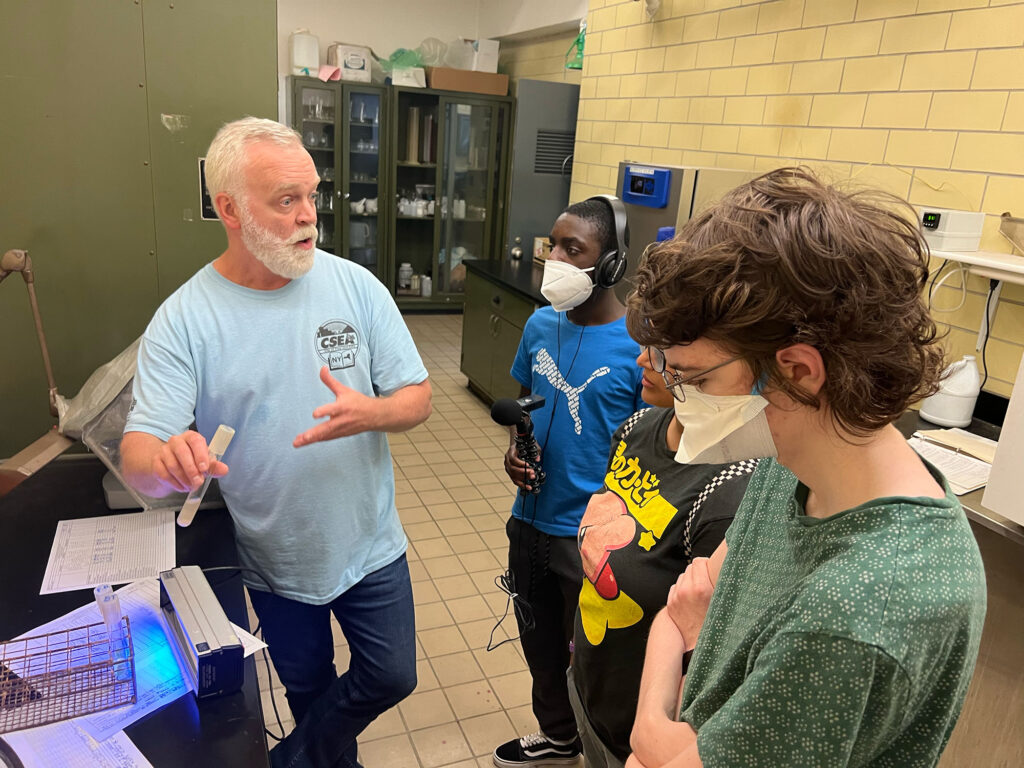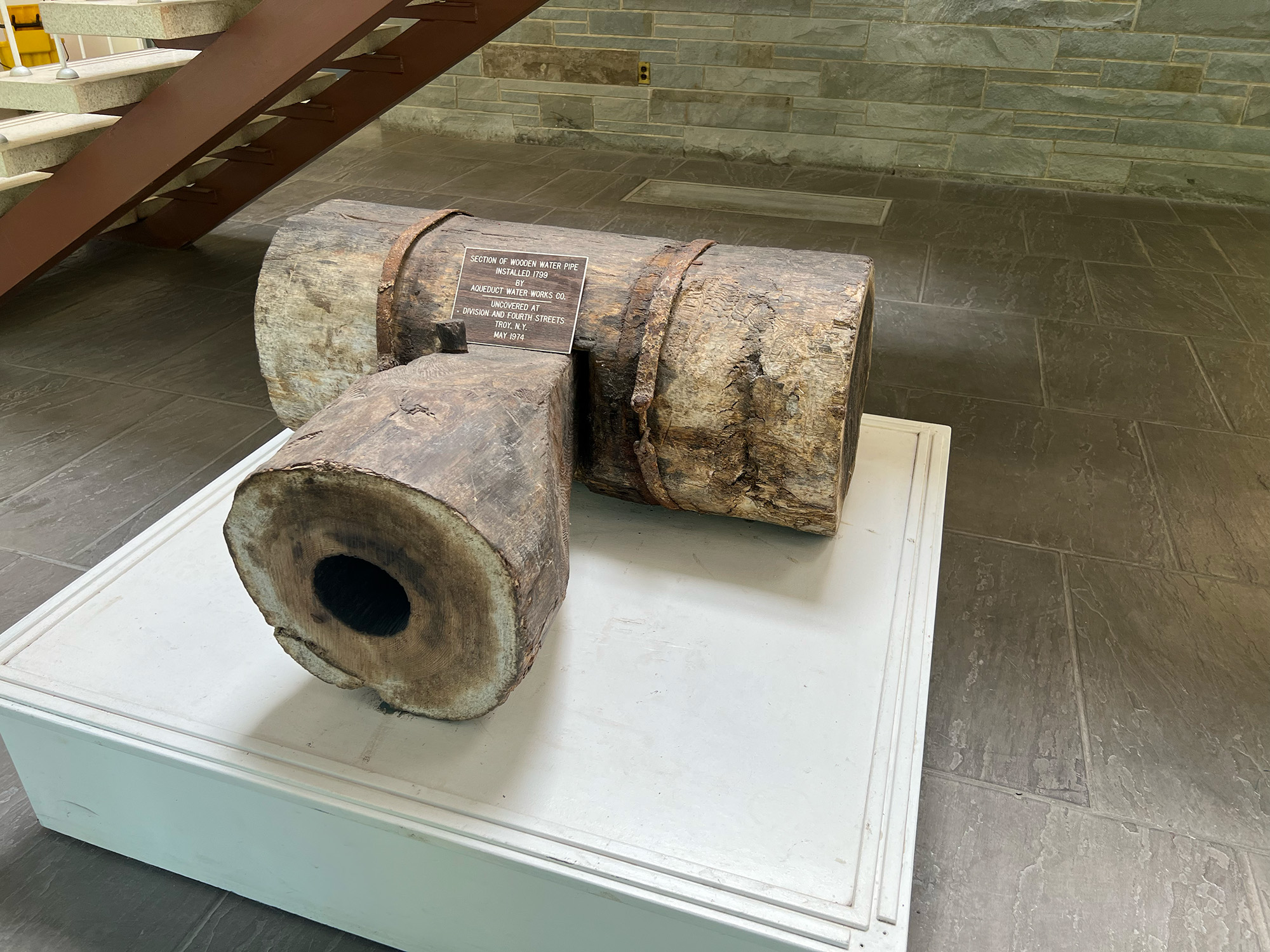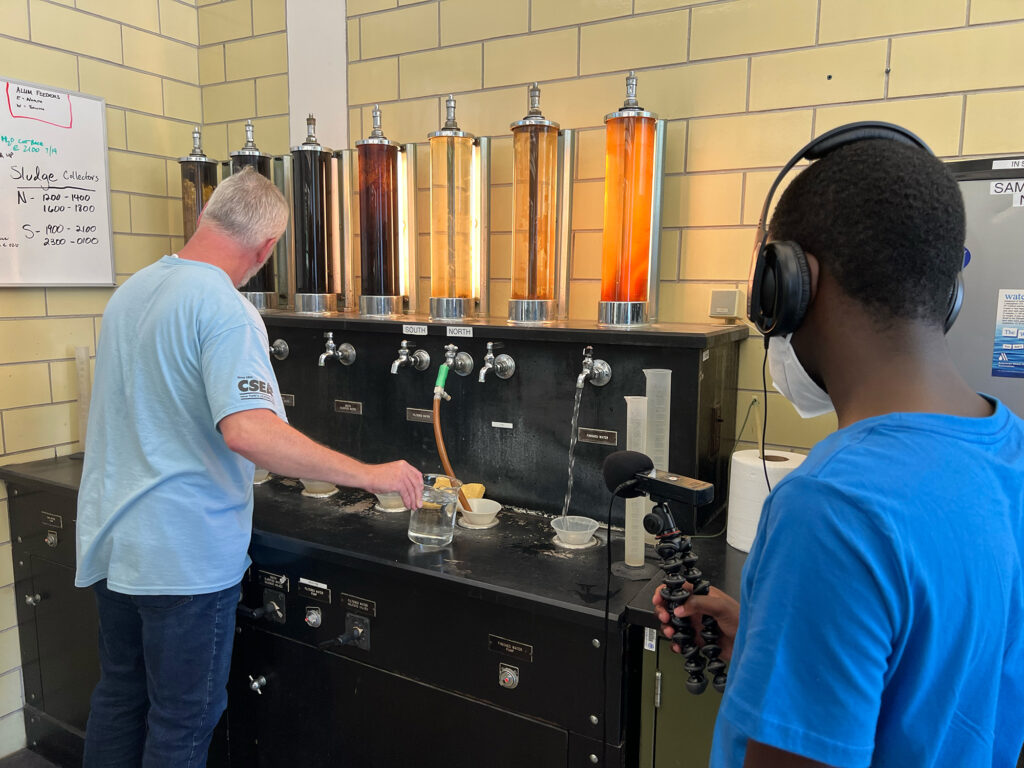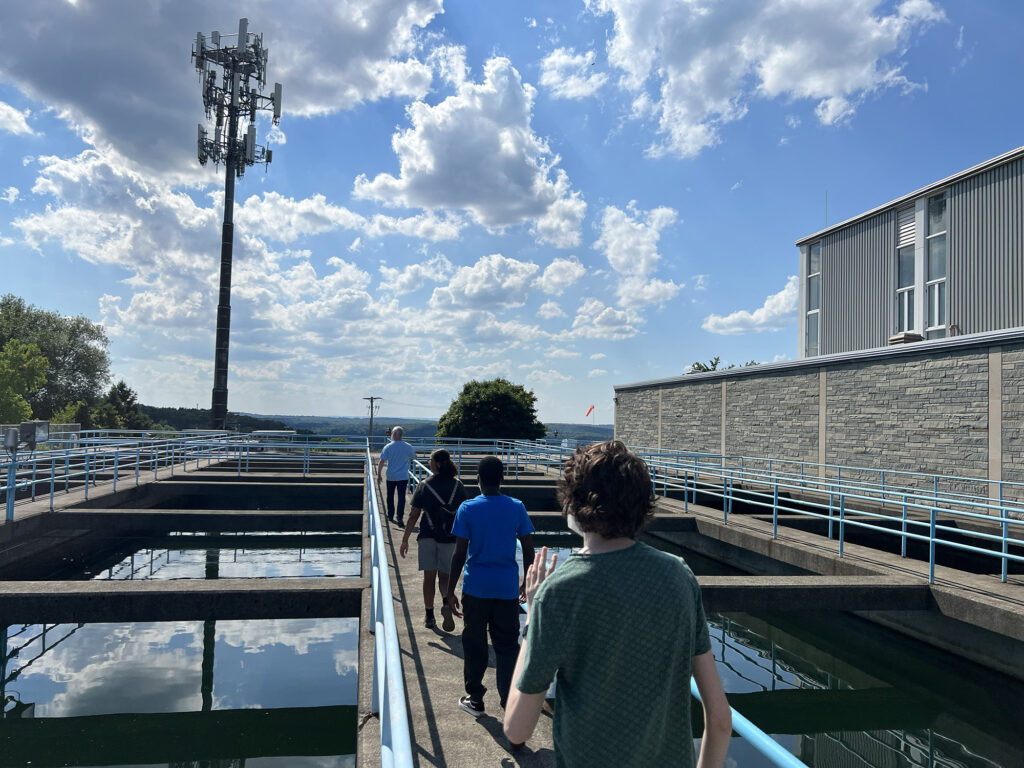
For week 3 of Water Justice Summer Camp, youth fellows visited the Troy Department of Public Utilities drinking water plant. There, we met and talked with William Spillane, who does quality control and testing of our drinking water as it moves from the Tomhannock Reservoir to taps throughout Troy and beyond. William gave us a tour of the plant and answered our questions, which ranged from the kind of expertise required to run a drinking water plant, to the way the utility works to reach households who may have lead contamination in their drinking water.

We started in the lobby, where information and objects relating to the history of drinking water infrastructure and treatment are on display. We learned how early (1799!) water distribution pipes were made out of wood treated with creosote, which is now known to be a carcinogen. We drew connections to how pipes made with lead–now known to be a neurotoxin–are still part of our infrastructure today, and how important proper, safe drinking water treatment is to prevent the worst impacts of those pipes.
As William reminded us, the drinking water crisis in Flint, Michigan–an egregious example of environmental injustice linked to drinking water–was due to a shift both in water supply and in the way that supply was treated, which caused lead pipes to corrode and dump high levels of lead into drinking water. In Troy, all the municipal pipes that are part of the public utilities water supply have been replaced and are made of iron or steel coated inside with cement, but there are still pipes in residences that are made of lead or have lead solder. These need to be replaced, but it is expensive to do so, and they must be identified first. The Environmental Protection Agency requires the water treatment plant to send out letters inviting residents to send their water in to get tested for lead, and follow up notices describing results. As youth fellows observed, many residents in North Central Troy are renters, and may not have the resources or bandwidth to get their water tested or get their landlord–who may live outside of Troy–to fix their pipes.

After this conversation on the history of drinking water infrastructure in Troy, we moved into the lab, where fellows got to see a range of tools and processes that are similar to what we do in the Water Justice Lab, but much more complex. While we test for the presence of one contaminant, enterococcus, William runs more than 30 tests for different kinds of contaminants, and adjusts the ingredients added in the water treatment process in response. He showed us the difference between water that had just entered the plant, and water that comes out the other end, just before it gets sent into pipes. Taps in the lab (set in an eighty year old dispensing structure with original parts!) allow him to draw samples at six different points along the treatment process. Here we also learned about all the paperwork necessary to prove each step of the quality assurance process has been completed, which needs to be presented to the department of health to make sure our drinking water is safe.

The final portion of our tour took place outside, among the massive bays where the water goes through “oxidation and flocculation” to remove impurities, ranging from iron and manganese (which can build up and clog pipes) to organic material from the reservoir, like decaying leaves, fish, insects, etc. As we understood it, after oxidation these impurities bind together into pieces (visible to the naked eye like “small chunks of wet bread” as William described it) then sink to the bottom as the water is moved gently from bay to bay by large paddles. After being Ph balanced by the addition of lime (and other things we probably forgot!) the finished drinking water is held in a huge underground reservoir. It gets a final dose of chlorine before its sent out across Troy, and arrives in our taps.
Along the way, fellows asked William lots of questions about how he got into this field, what kind of experience he has with data and statistics, what his favorite moments on the job have been, and what kind of person you need to be to enjoy this job. We learned that being detail-oriented, caring about deeply about water as a source of life and health, and knowing your way around a microbiology lab are all part of what make William great at his job.
